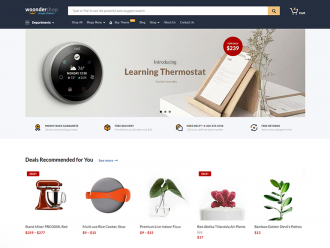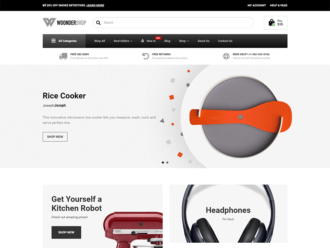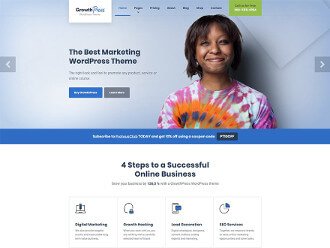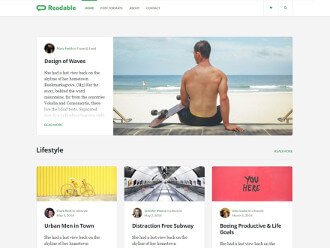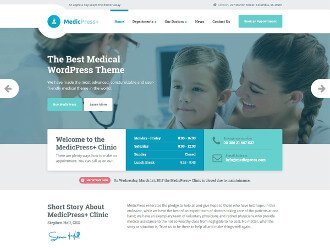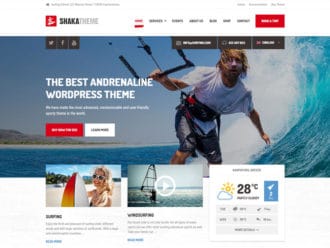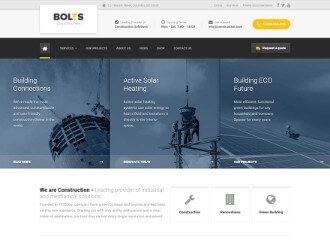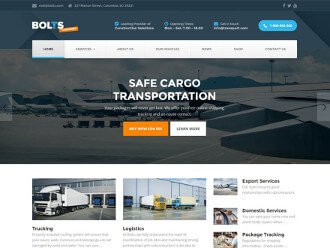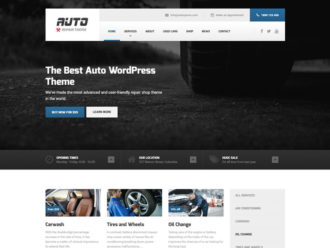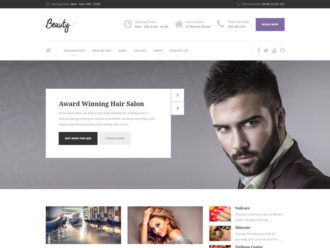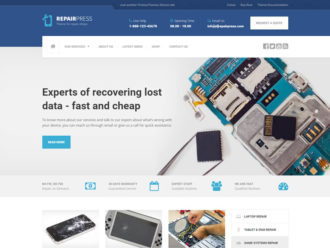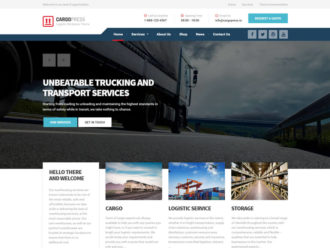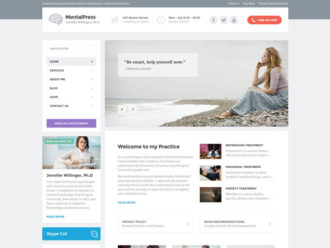Today, an average person living in the city sees around 5000 ads per day. It’s a frightening number and it suggests something about the marketing industry and the consumers alike.
People in the marketing industry have had to realize that they need a new approach. With this huge constant flood of commercials, it’s become increasingly difficult to reach people. On the other hand, consumers are getting really tired of ads. In order to get at least a few seconds of their attention, you need to show them products and content they personally find interesting and appealing.
These circumstances have started a huge trend of personalization in marketing. It’s never been more important to deliver personalized messages to people. To a consumer, these messages look like they’re made exactly and particularly for him or her, unlike generic, dull commercials we used to come across in previous decades. People quickly got used to this new approach and now as much as 71% of consumers feel frustrated if their shopping experience is impersonal.
So, as a business owner or marketing specialist, how do you create and distribute personalized content? And why do personalized messages work better than traditional ads? We’ll try to give brief answers to these questions in this article.
Data collection and processing
Luckily, creating and sending personalized messages has never been easier. However, there are some prerequisites to this. The first and most important is to get to know your customers, not just your average buyer, but every single one of them, their desires and interests. For this, you need data. A lot of data.
Obtaining a ton of relevant customer data has never been easier as well. First of all, you can ask your users and customers to give their personal data to you. There are several reasons why they’d to this – from getting discounts on products they like to receiving personalized product recommendations. In general, if they’re offered slightly better experience or better prices, they are quite likely to provide their personal info in return. 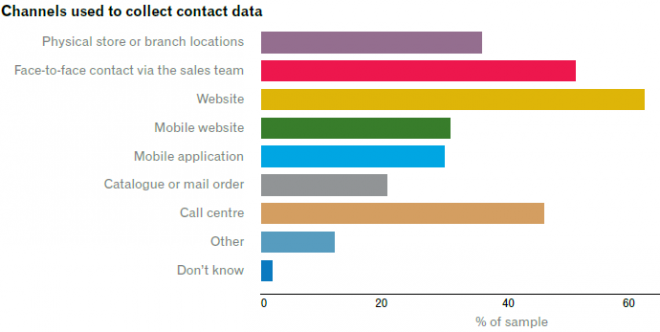
Source:econsultancy.com
You can also collect their data by tracking their online activity. If you equip your website with appropriate software, you can get some pretty valuable insights about your customers’ demographics, interests or buying habits. Moreover, there are apps and tools that turn an anonymous email address or IP address into full personal or company profiles.
Of course, this huge body of data needs to be processed and interpreted.
One of the best ways to manage this is to use a customer relationship management (CRM) tool that does it all, like HubSpot. Integrated seamlessly with WordPress, you can track your contact’s online activity, build segmented lists, and utilize their various marketing tools to action your personalized marketing strategy.
Segmentation and personalization
So how does personalization even work? Once you have all the relevant data, you start by dividing your audience and your customers into numerous segments using a lot of different criteria. Criteria can be their location, the device they’re using, their purchase or search history and basically any aspect of their online behavior.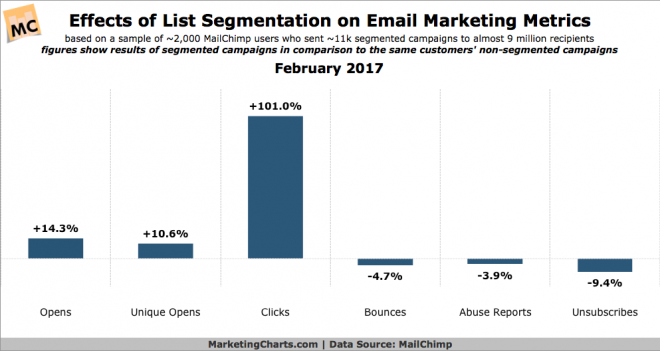
Source:www.marketingcharts.com
Once your customer base is well-segmented, it’s much easier to target parts of it and even individual users with different content. Every single person leaves slightly different online footprints and thus demands a slightly different approach and experience, compared to the next person. Of course, a high level of automation in this process is a must as this tends to be an enormously complicated process that gets even more complex once the data starts piling up.
So how do you use this data to your advantage? There are at least four ways to do this, and they are intertwined to a certain extent – personalizing your messages, your recommendations, your content and your communication. Let’s go step by step.
Personalize your messages
To start with, you need to fully customize the advertising messages you’re sending out. This goes for all kinds of messages, from banner ads to sponsored social media posts. You can’t just make one message or one post and just throw it around to everyone in the same form. It’s crucial to create multiple different ads that address different categories of your audience and use targeting tools to distribute them wisely.
Most importantly, you need to personalize promotional and transactional emails you send to your customers or subscribers. This may not seem obvious, but email marketing is the most profitable digital marketing strategy, with most estimates claiming there’s an average of around $40 return on a $1 investment.
However, in order to achieve this very high ROI, your email strategy has to be sound and efficient. You need a carefully segmented email list and different triggers set in place. For instance, you can set your email marketing software to send automatic emails with related products to those who purchase an item from you.
For instance, offering sun lotion to those who bought swimming suits or basketball gear to those who bought basketball shoes will eventually put a few more dollars in your pocket. Furthermore, if a person has abandoned the cart that already had some products in it, you can offer a small discount on these products or some sort of coupon to encourage them to come back and buy.
You can set all sorts of triggers to send all sorts of offers, and the point remains the same – the buyers will have a feeling as if this message was designed specifically for them and it will contain items and offers that they find interesting.
Of course, in order to get the most out of data you have collected, you’ll have to connect various apps that collect these pieces of information from different sources and platforms. That’s why having a central, integrated system to overlook all actions is hugely important.
Personalize product suggestions and recommendations
On the same token, you need to personalize your offers and recommendations on your website as well. Putting the right product at the right time right in front of the customer’s eyes can do some very good things for your business.
This approach is less intrusive than email since these recommendations are seen as an integral part of the online buying experience. And just like with emails, it’s actually helpful and adds value to the user, while increasing your sales at the same time.
Again, you can set various guidelines about who should see which kind of products. Criteria for this can be very different. You can personalize recommendations according to already bought products, recently viewed products, location of the user, their total spending, average spending per purchase and much more. You can even set different prices that would best fit the customer’s behavior and spending habits.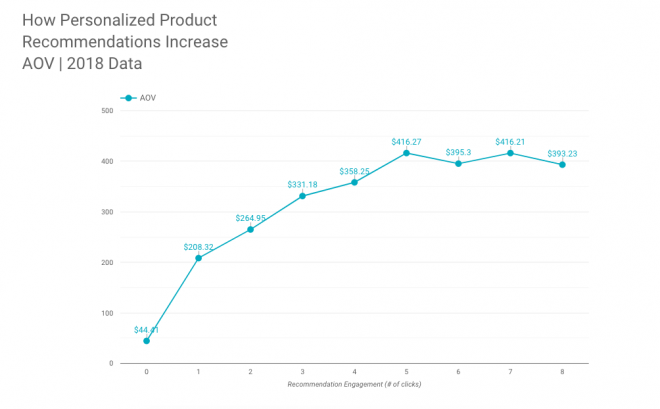
Source:www.barilliance.com
By fine-tuning these parameters more and more, you can make sure that your visitors constantly get the best possible suggestions during their stay at your website. Given that 31% of eCommerce site revenues come from product recommendations, having the right tactics in place for this aspect of your e-business is absolutely vital.
Personalize content
In a sense, personalized messages and recommendations fall under the category of personalized content. However, you can also customize entire social media posts, blog posts and, with a little bit of clever targeting, you can still create a feeling that this post was designed for a particular user that comes across it.
You can go as far as personalizing entire category pages or even your homepage, given customers’ interests and habits. You simply get yourself a nice theme like WoonderShop and use the data you’ve obtained about your customers to show different skins, layouts, products or categories to different users as soon as they visit your website next time. 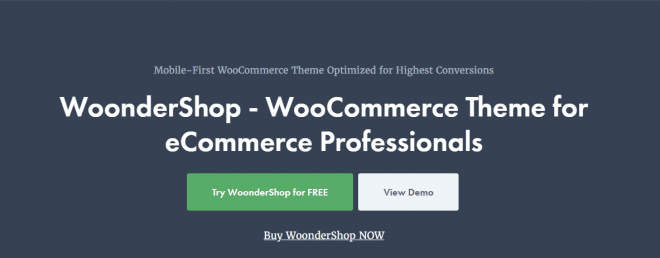
Lastly, when it comes to personalizing content, you can offer them content that will help them make their minds up about specific products or help them use the products properly. Once your CRM or other activity tracking software has determined a user’s interest in a certain product, it can automatically show this user all kinds of tutorials, guidebooks or blog posts that will reveal more about the product and thus help you make the sale.
Personalize communication
Finally, you can customize the way you address your customers through customer support or in other kinds of one-on-one communication. In general, messages you send and recommendations you suggest should be customized not just in terms of what you offer and what you tell people, but also in terms of how you do it.
This means that your voice, language, approach, and terminology should be adapted to different target groups. The way you address your customers and prospects is of utmost importance.
Obviously, your customer service reps should be aware of this as well. They should adapt the way they communicate with customers given their age, location, interests or their level of proficiency in using your product, your website or eCommerce platforms in general. That’s why recording conversation history with your customers can be very valuable, as you can find out a lot about them this way. It will be of help not just when it comes to the way you communicate with them, but also with all other aspects of the personalization process.
Final thoughts
To conclude, the era of personalized messages and experiences has already started and it’s here to stay. As tools and software are getting better at collecting and analyzing data, marketers will follow by creating personalized messages and delivering them to the right audience.
Hence, personalization is not going to be an option in the near future – it will become a must. It will be virtually impossible for an eCommerce business not to apply this strategy and survive. So if you still don’t have a marketing personalization strategy in place, then laying it out and finding the right tools to help you should definitely be among your top priorities.


